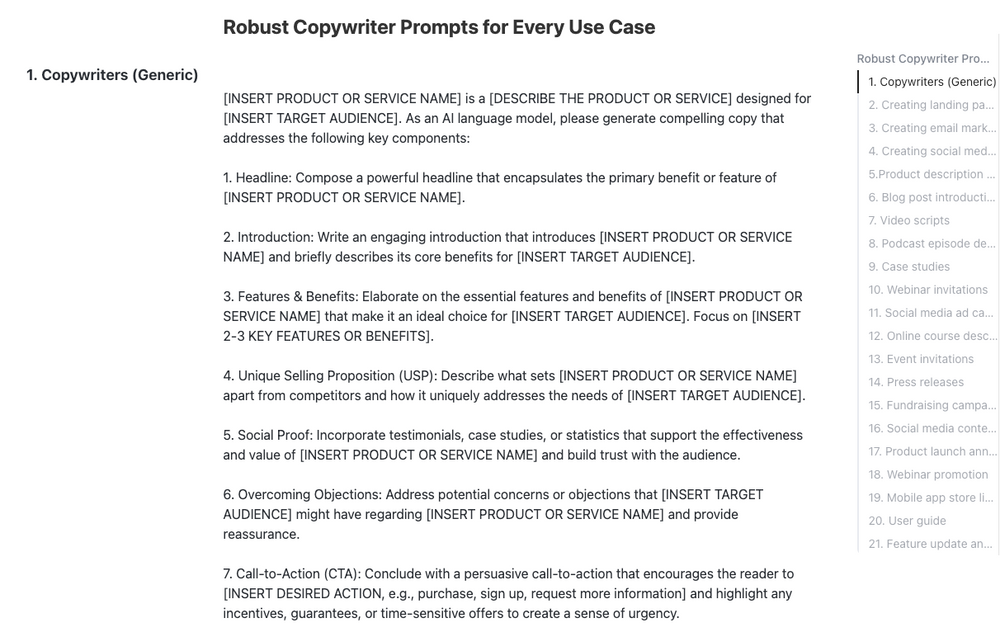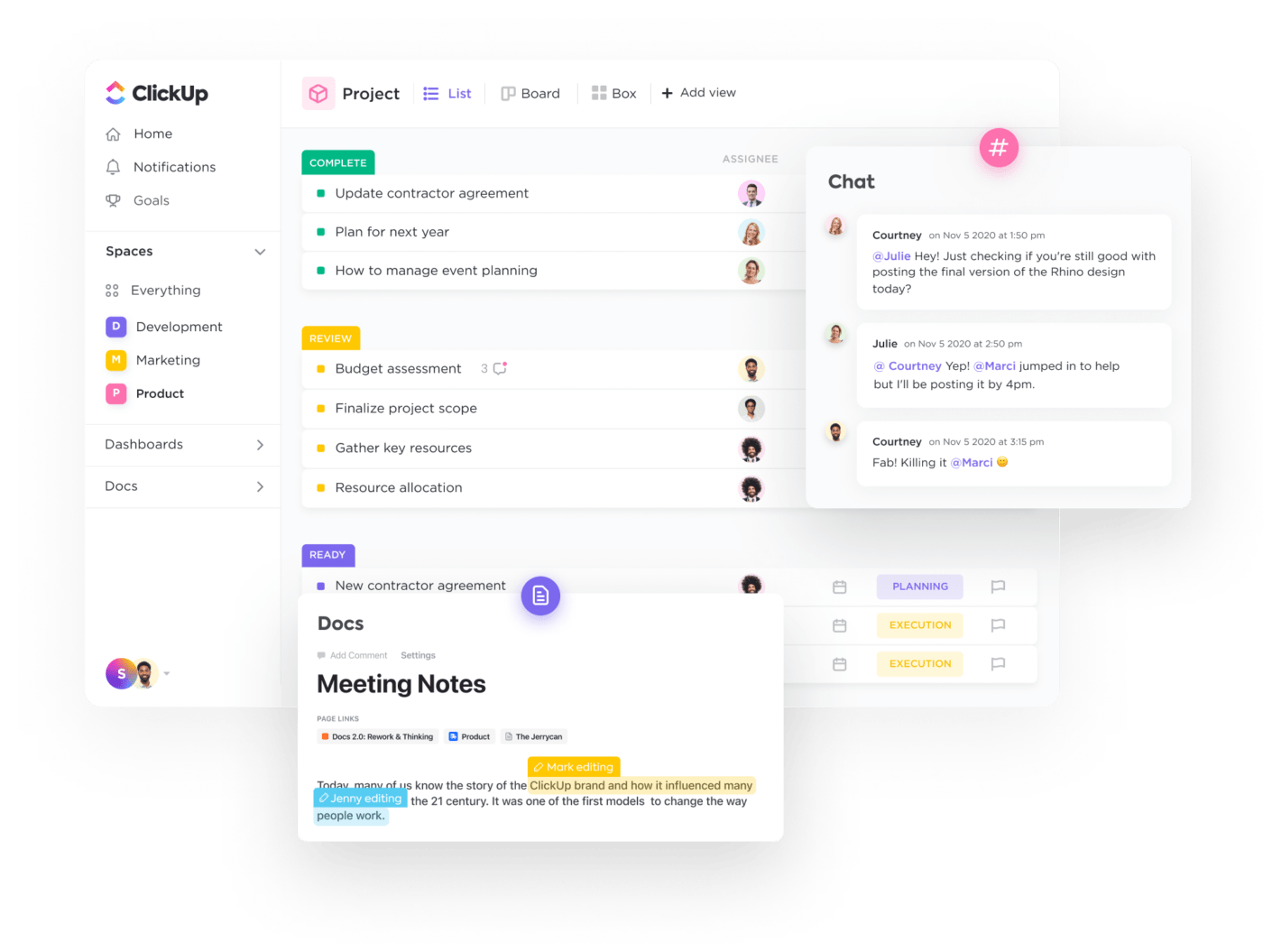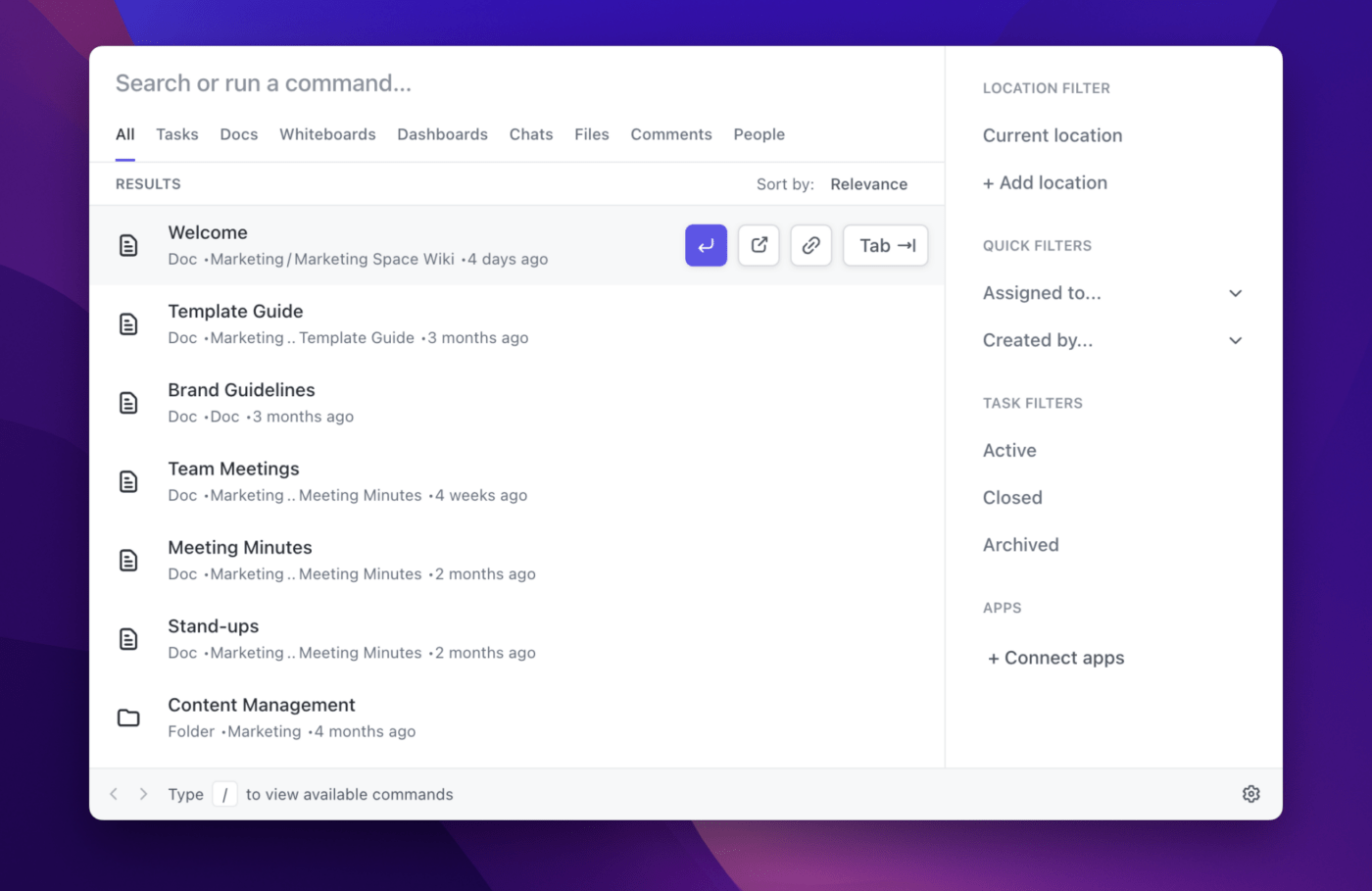The Ultimate AI Glossary: 50 Terms to Get You Familiar With Artificial Intelligence

Sorry, there were no results found for “”
Sorry, there were no results found for “”
Sorry, there were no results found for “”
By now, we’ve all witnessed artificial intelligence or AI technology and its role in reshaping the very fabric of our existence. From healthcare to finance, transportation to entertainment, AI has become the driving force behind countless groundbreaking advancements—and it can get pretty overwhelming to keep up with all that!
Whether you’re a learner or simply a curious, non-tech person, figuring out AI terms can be like exploring a foreign land. You’re surrounded by new phrases, jargon, and concepts, from large language models and neural networks to a machine learning model, that don’t immediately make sense.
Keeping the rapid pace of developments in mind, it’s worth your time to go through a crisp dictionary to catch up with unfamiliar AI terms and phrases.
We’ve curated 50 must-know terms in this AI glossary to provide you with a solid foundation of knowledge in this space. By the end of this article, you’ll get cozy with AI lingo, be able to discern its implications, and perhaps even harness its capabilities for personal endeavors!
Let’s start with key AI terms in the A to F range that can significantly enhance your grasp of this complex field.
An adapter is a framework that helps transfer learning to a new AI model by stitching layers to an existing model. The purpose is to get the model to switch to new tasks without starting from scratch. Adapter modules save time, money, and storage space by reusing pre-trained models for various jobs like chatting with computers, translating from a common base language to a new language, or powering robots.
An AI algorithm refers to the specific programming that tells a machine how to function independently. It includes step-by-step instructions or rules that enable AI systems to process raw data, make decisions, and learn from it. Are you impressed by AI’s ability to understand language, recognize faces, play chess, or even drive a car? Well, the algorithm’s the brain! 🧠
AI safety is a wide-scope field covering various concepts about ensuring that our brilliant artificial intelligence systems are not just smart but well-behaved and good-natured, even in unfamiliar settings. It refers to principles, practices, and research efforts dedicated to studying an AI system’s design, build, and deployment. The goal is to minimize risks like unreliable output, unintended consequences, and potential harm to humanity.
The digital evolution of human intelligence is analogous to artificial intelligence. AI covers the field of computer science, including computer vision, that makes it possible for systems to think, learn, and carry out operations that normally call for human intelligence—but at a scale and speed that would make us mere mortals envious.
Automation implies using AI technology to run tedious work and business processes on autopilot—the focus is on task efficiency and reducing errors in manual work.
ClickUp Automations is a great starting point for beginners who want to explore automation capabilities through a simple interface. It helps you set triggers and conditions to automate routine tasks, from sending lead emails and updating statuses to doing admin work, all in a few easy clicks. With pre-built and custom automation options in your toolkit, you’ll be amazed at how much time and effort you can save while keeping your projects and to-do lists on track.

Bonus read: Check out the 10 best AI tools for automation!
Black box AI or BAI refers to an AI model that’s not super transparent regarding how it makes decisions. Both users and designers struggle to comprehend or interpret its inner workings or decision-making procedures—as opposed to a white box model, which is easily understandable. This lack of openness can give rise to questions about ethics, responsibility, and the possibility of biases, making BAIs unsuitable for use in high-stake fields like the military or healthcare.
Big data includes large and complex datasets that are too substantial to be processed or analyzed using traditional data management tools. You need specialized AI technologies to uncover valuable insights, patterns, and trends from the data. In return, big data is used to train AI, so it’s a symbiotic relationship. 🤝
ChatGPT is an AI-powered conversational companion designed to engage in natural and informative conversations on various topics. It responds by answering questions, providing explanations, and offering insights. ChatGPT was trained using supervised learning and Reinforcement Learning from Human Feedback or RLHF, which makes it a versatile AI tool capable of human-like interactions.
If you like how this sounds, you can also check out these ChatGPT alternatives—or maybe you’d love ClickUp’s readymade prompts to extract smart responses from such tools!

A clever computer program that’s always up for a chat, ready to answer queries and lend a hand with specific tasks—that’s chatbot. It’s the unsung hero of customer support and information finding, as its main purpose is to engage with human language.
So, next time you enjoy a recommendation text from your streaming service or e-commerce website, you’re probably witnessing the magic of an AI-powered bot!
Conversational AI refers to the technology that empowers machines, like chatbots, virtual assistants, and similar speech-based apps, to hold human-like conversations. This AI uses natural language processing or NLP and high computing power over various contexts and languages to perform versatile functions, like recognizing a piece of music or ordering a sandwich for you! 🥪
Data augmentation involves the skillful manipulation and expansion of your existing data. This practice is a cornerstone in machine learning and AI, as it amplifies the volume and diversity of training data for a model. The aim is to empower algorithms by providing them with a broader range of examples to learn from.
Deep learning is the brain behind the AI revolution. It’s a subset of the machine learning system that aims to mimic the human brain’s structure, using artificial neural networks with multiple layers to process vast amounts of data. Deep learning models can recognize patterns, make predictions, and learn complex tasks, revolutionizing fields like face and speech recognition and autonomous driving.
Ethical AI is a branch encompassing issues related to the moral compass of AI. It involves designing and using AI systems in ways that prioritize fairness, transparency, accountability, and respect for human values and rights without causing harm or discrimination.
Fine-tuning is akin to the specialized training of pre-existing machine learning models to enhance their performance for specific tasks or domains, ensuring they become proficient in servicing those areas.
You’ll often come across the following terms in the G-L range, which are just as pivotal to your understanding of AI.
Generative AI or GenAI refers to AI models that craft fresh content—like photos or texts—reflecting styles and patterns derived from its training data. From imaginative art to informative articles, GenAI tools can produce a wide variety of output without code, which is why they serve as productivity sidekicks for many professionals.
Among the most prominent productivity-focused AI tools, ClickUp stands out with its generative AI functionalities. Its research-backed writing assistant, ClickUp AI, can generate text with pre-structured headers and tables on virtually any topic, whether you’re creating a go-to-market plan, writing a client email, summarizing bug reports, or scheduling games for team-building. The tool has been optimized and tested extensively, so it delivers a clear and consistent output.

Plus, with the ClickUp Generative AI KPI Tracking Template, you can measure the impact of AI use in areas like content creation and product innovation!
Genetic algorithms, or GAs, are part of a larger set of evolutionary algorithms that work akin to digital evolution. GAs present a computational technique inspired by natural selection, helping solve complex problems using themes within biological evolution, such as mutation and survival of the fittest. 🐒
These algorithms are widely used for search optimization and machine learning.
GPTs—or Generative Pre-trained Transformers—form an assortment of neural network-based language models developed by Open AI.
GPT-3 has been ranked among the most advanced models of its time. With a vocabulary size of 175 billion words, its prowess lies in deciphering and producing human-like text, rendering it a versatile asset for various natural language tasks, from chatbots and content creation to language translation and beyond.
GPT-4 is an even more sophisticated and trained multimodal model than its predecessor. It can work with both text and image inputs and is capable enough to support complex creative collaboration—think teaming up with it to compose music, craft screenplays, or even emulate your distinctive writing style.
In the context of AI, hallucinations happen when the system generates inaccurate, incoherent, or nonsensical information, typically due to errors or limitations in its training, understanding, or processing capabilities. It’s a hiccup that can make an AI system unreliable.
Developed in the late 1950s, Information Processing Language, or IPL, was one of the first high-level programming languages for manipulating data and processing information. Today, IPLs are unique to each artificial intelligence application.
The Internet of Things, or IoT, acts as a web of digital objects embedded in our physical world. It’s a network of smart devices, from everyday objects like thermostats and smartwatches to industrial machines, that can collect, exchange, and act on data. When combined with AI, IoT machines display better predictive maintenance capabilities.
Think of a knowledge-based system or KBS as a virtual sage. It’s a computer program that relies on a knowledge base, a repository of information and rules, to tackle intricate problems and offer expert guidance within a particular domain. It helps with decision-making and troubleshooting across various industries.
For instance, AI-enabled ClickUp Docs can serve as an excellent knowledge base for businesses. Its built-in AI assistant can summarize lengthy content to help you absorb information and make decisions faster. It can also extract action items from meeting notes and workflows, improving your overall efficiency.

A linguistic giant in the world of AI is a Large Language Model or LLM. It’s a powerful artificial intelligence system built on extensive data and sophisticated algorithms, enabling it to understand, generate, and manipulate human language with remarkable proficiency.
Moving on to the M-R AI terms, we’ll explore concepts like machine learning models and neural networks that form the backbone of many advanced AI systems.
Machine learning involves training algorithms on data to recognize patterns and make decisions. As an algorithm is exposed to more data, its discerning process improves, making it more skilled at its intended tasks. It’s like teaching a computer to learn and adapt on its own.
Natural language generation, or NLG systems, takes facts, figures, and data points and transforms them into coherent narratives, generating reports, articles, and content humans can easily understand. This technology powers automated reports and personalized responses to customers.
Natural language processing, or NLP, is like a bridge between humans and machines, allowing computers to understand, interpret, and respond to human language. It uses advanced concepts like sentiment analysis to improve interpretations.
Here’s a demonstration of how NLP works in ClickUp—the platform enables users to use natural language commands to:
This feature set helps you stay on top of meetings and calendars and navigate your day without annoying notifications!

The neural network is a computing system inspired by the human brain. It includes layers of interconnected nodes that work together to analyze and process data, facilitating deep learning and pattern recognition.
No-code development is a way for anyone without coding expertise to conjure up apps and software. With no-code AI, you can typically leverage visual and graphical configurations to create AI applications. It’s all about making tech more accessible.
Open AI is an American AI research company and the brainpower behind game changers like GPT-3 and GPT-4. It strives to offer responsible, ethical, and user-friendly products. It recently launched GPTs, an AI assistant that users can customize for various roles and intents.
This tech wizard will transform paper into pixels. OCR scans both printed and handwritten text, converting it into machine-readable text. Modern CR tools harness AI to make on-paper content easily editable and searchable, even allowing automated processing with contextual, skim-reading capabilities.
Optimization is fine-tuning an AI model to make it work as efficiently as possible. Whether it’s machine learning algorithms, a manufacturing process, or a supply chain, optimization techniques aim to find the best possible solution within given constraints. It’s all about maximizing performance, minimizing costs, and making things run like a well-oiled machine.
Pre-training is the initial phase where AI models learn the basics of accomplishing a particular task, like learning the alphabet before diving into writing full sentences. The models are exposed to large datasets, helping them grasp languages and patterns. This sets the stage for fine-tuning, where they train to specialize in specific tasks.
Prompt is the input or query the AI model uses to produce a meaningful and contextually relevant output. They can range from simple queries like Translate this sentence into French to more complex requests such as Write a short story about a detective solving a mystery. 🕵️
Using the right prompt is crucial to getting a useful response from AI. You have to phrase it suitably to make it work for the system’s processing style.
Stressing over prompts is a thing of the past with ClickUp AI! The platform purposefully offers 100+ role-specific prompts and AI commands that trigger responses perfectly aligned with your preferences and requirements. You can even re-prompt to fine-tune the results!

Reasoning in AI is the cognitive powerhouse driving artificial intelligence. An AI system’s reasoning can be based on logic, established rules and patterns, or common sense, but many models are also trained on abductive or monotonic reasoning.
Reinforcement learning is like teaching new tricks to a dog, but instead of anticipating treats, AI learns through rewards and punishments. The AI agent explores an environment, and when it makes good moves, it gets virtual pats on the back—rewards—and when it messes up, it faces digital wrist slaps—punishments. Over time, it figures out the best game plan to maximize the good stuff.
It’s a captivating blend of engineering, computer smarts, and AI that brings robots to life. These mechanical wonders can be anything from your helpful vacuum cleaner to futuristic human-like buddies. It is all about infusing machines with a sense of action, making them indispensable in fields like manufacturing, healthcare, and even exploring outer space. 🤖
A rule-based system relies on predefined rules and logic to make decisions and perform tasks. It’s like having a rulebook, where the AI system follows specific instructions and conditions to reach conclusions or take action. Let’s take a smart home security app as an example. If the motion sensor detects movement—Condition—it triggers a notification to the homeowner’s smartphone—Action.
The final segment of our artificial intelligence glossary covers terms from S to Z.
This is a step-by-step process used in computer science and artificial intelligence to locate specific information within a vast dataset. For example, ClickUp uses advanced algorithms for its Universal Search feature, helping users systematically navigate through stored tasks and data.

Imagine Self-Organizing Maps or SOM as the data organizers of the AI world. They’re trained to represent high-dimensional data into a simpler model while retaining its original topography. The idea is to make data easier to understand.
Sentiment analysis is an AI technique used to decipher the tonal value of sentences, which can be positive, negative, or neutral. Businesses often use it to analyze social media posts, reviews, or news articles and pick up on the underlying opinions on their products.
A nifty technology that listens to your voice and transforms what you say into written words on a screen—that’s it. Whether dictating a message, transcribing a meeting, or using voice commands with your device, speech-to-text makes communication and data entry a breeze.
Often referred to as Artificial General Intelligence—AGI—or Deep AI, Strong AI represents the highest level of artificial intelligence. It possesses human-like intelligence and can understand, learn, reason, and apply knowledge across a wide range of tasks in a manner indistinguishable from humans. Strong AI is a broad concept—not a particular tool.
An example of an arguably Strong AI offering is ClickUp’s AI Writing Assistant. It doesn’t just focus on one area of content generation—you can use it to get real-time composition support, summarize text efficiently, improve the grammar and tone of texts, and brainstorm fresh ideas. Whether you’re a seasoned business executive or just a new startup owner, this tool is a must-have for efficient professional-grade writing.

This is a powerful AI tool that takes written descriptions or text-based input data and creates images based on those prompts. Midjourney is a good example of a text-to-image generator.
In contrast to speech-to-text, text-to-speech turns written text into spoken words. Whether a screen reader helping visually impaired individuals or a virtual assistant reading your messages aloud, text-to-speech makes information accessible and communication more inclusive, just like an AI storyteller.
This is a technique where AI models leverage knowledge gained from one task to excel in another. Instead of starting from scratch every time, they build on what they’ve already learned. In the world of AI, transfer learning is used to make models smarter and more efficient across intended tasks.
Like a free-spirited explorer, unsupervised learning is a machine learning algorithm where the model doesn’t have a teacher/trainer providing clear answers. Instead, it sifts through data, finds patterns, and makes sense of it on its own. It’s used for tasks like clustering similar data or reducing the complexity of information.
Knock, knock, virtual reality is at your door! With the help of AI, it transports you from your physical surroundings into a computer-generated world. With a VR headset, you can walk on Mars, fight dragons—or perhaps attend Taylor Swift’s Eras Tour someday—all without leaving your room.🕺
Weak AI, or Narrow AI, is the AI specialist in the room. It’s not your all-knowing generalist but a task-specific virtuoso. Picture it as a virtual expert, finely tuned to handle a particular job, whether it’s acing a chess game or spotting faces in photographs. While it’s brilliant within its specialized domain, it doesn’t step into the world of general human intelligence.
Explainable AI is a special kind of artificial intelligence designed to show us the gears and cogs inside the AI’s decision-making process. With XAI, you don’t have to guess why AI makes certain choices—it tells you. This transparency is super important, especially in crucial areas like healthcare, finance, and self-driving cars, where we need to understand and trust the AI’s decisions.
Zero-shot learning is a clever machine learning approach where AI models learn to recognize objects or concepts without prior examples. Instead of being shown countless images of, say, rare animals, they can identify them even if they’ve never seen them before. You’re teaching AI to think on its feet, making it incredibly adaptable in situations where traditional machine learning methods might stumble. 🦾
You’ve finally made it through the maze of trendy AI terms! To thrive in this ever-evolving landscape, we must cultivate a mindset of continuous learning and a willingness to embrace new technologies.
By doing so, we stay relevant and become active participants in shaping the future. With the right tools, like ClickUp, you can keep pace with innovation and become a trailblazer in the world of AI. Adapt, learn, and evolve with a ClickUp account and scale up your business and professional endeavors! ☘️
© 2025 ClickUp